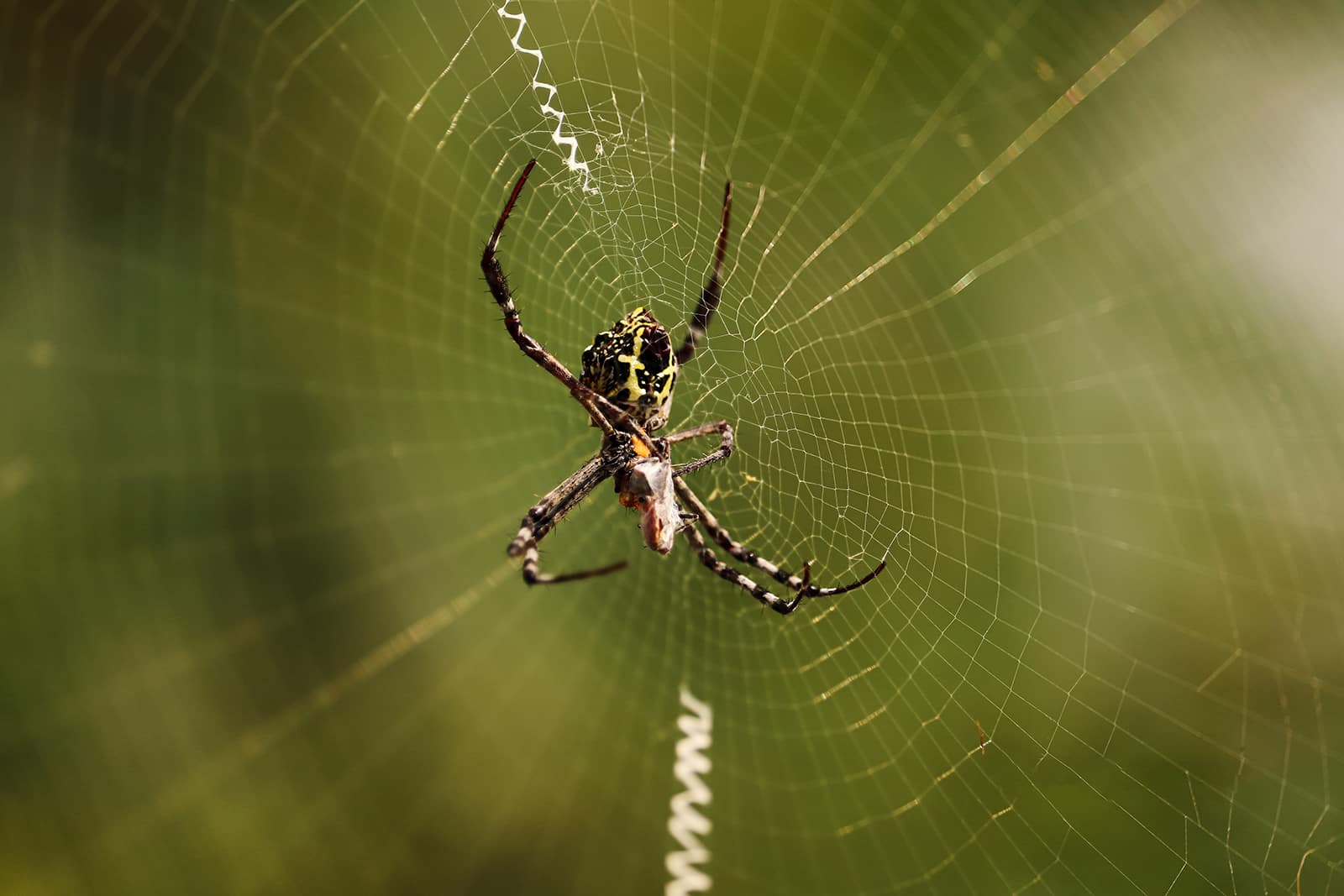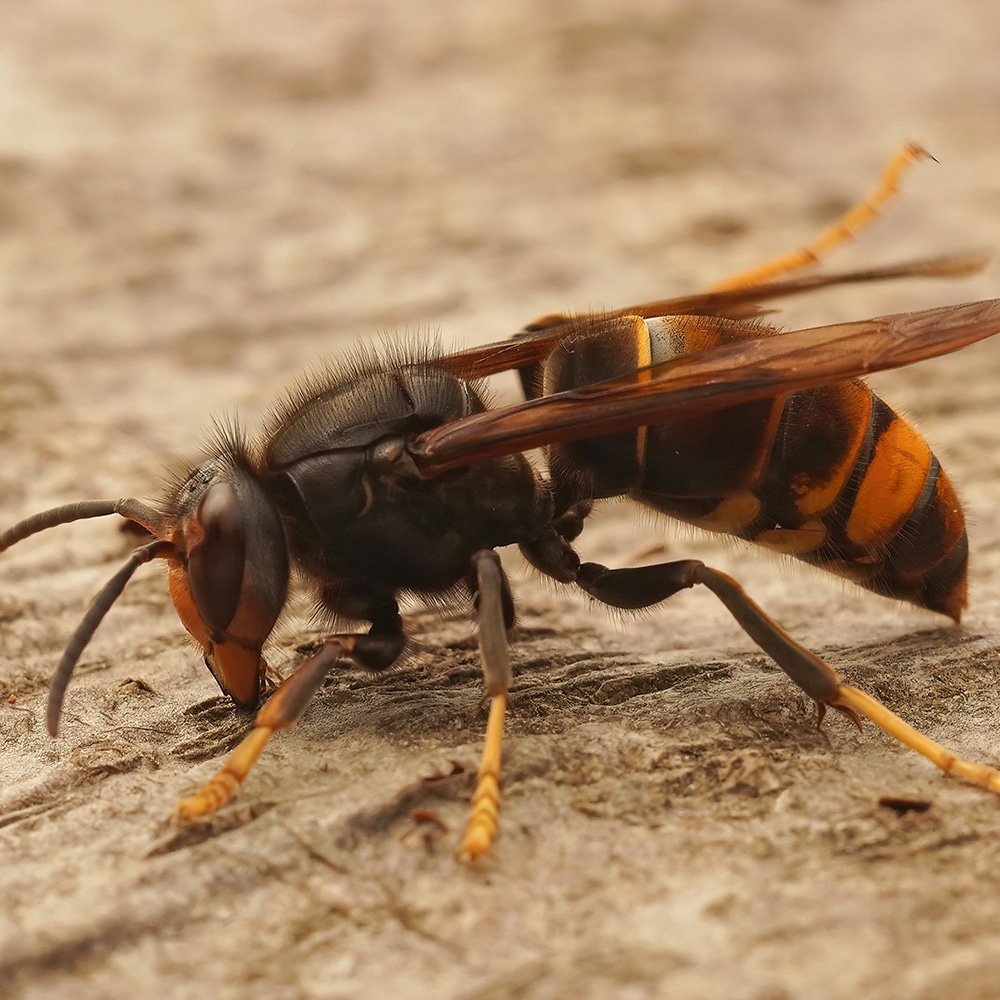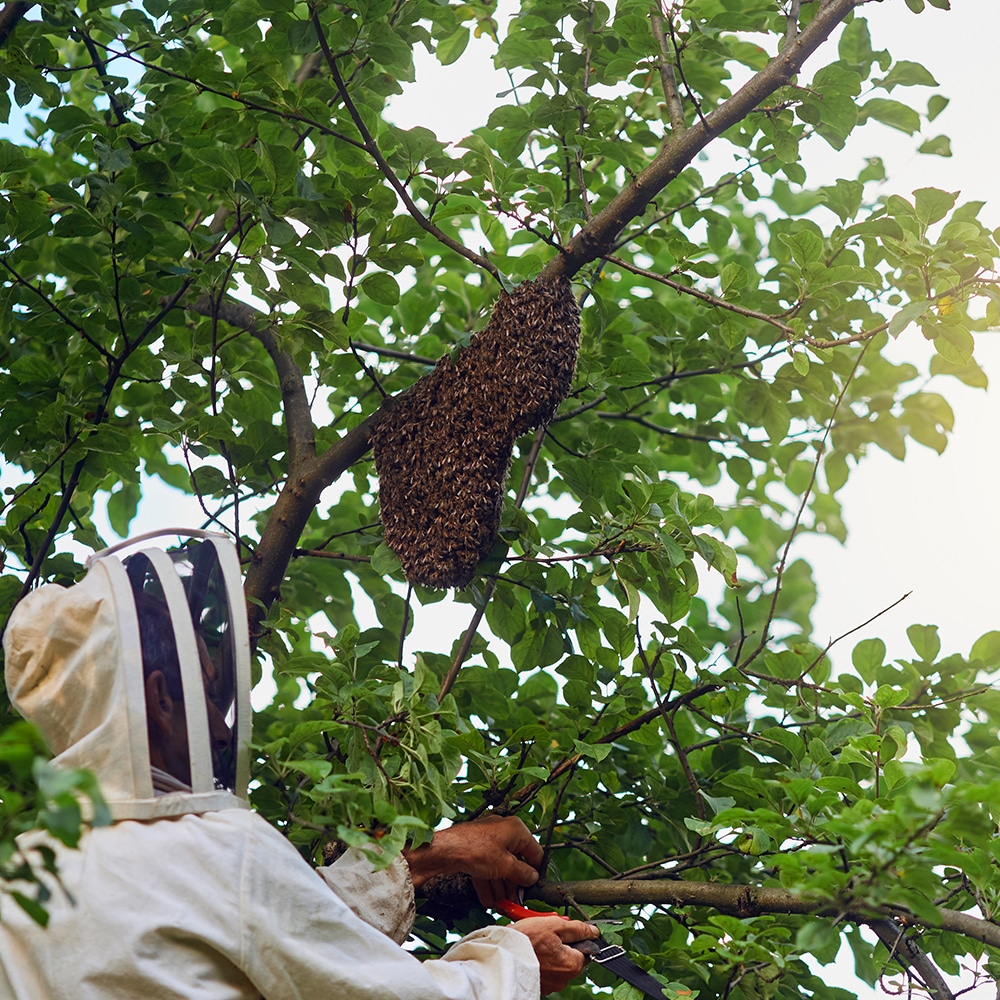
Why Do Spiders Come Back And Why
Why Do Spiders Come Back And Why On The Central Coast NSW. Responsive Proactive Solutions. Detail-focused for lasting results. Call Adam on 0431 222 894
How to Prevent Wasps from Building Nests in Your Property is a common concern for many homeowners. Central Coast NSW residents can rely on Vital Pest Control for effective solutions. Let’s explore why wasps choose certain locations, and how you can keep them at bay.
Why wasps choose certain locations for nesting
Wasps seek sheltered spots that offer protection from elements. They love eaves, sheds, and garages. These spots provide warmth and safety. Understanding their preference helps in planning your defence.
Best materials to block wasp entry points
Use fine mesh to cover vents and soffits. Caulk is perfect for sealing cracks. Weather stripping helps secure doors and windows. These materials reliably deter wasps from entering your property.
How to remove old wasp nests to prevent new ones
Removing old nests discourages new colonies. Dawn and dusk are the safest times for removal. Always wear protective clothing. Keeping your property clear of nests is essential for wasp prevention.
How to keep wasps out of sheds and garages
Keep doors and windows closed. Install screens where possible. Regularly inspect for nests, especially in corners. These steps ensure wasps stay out of your sheds and garages.
Why ventilation affects wasp activity
Good ventilation reduces humidity. Wasps prefer moist environments. Improving airflow makes spaces less attractive to them. Ventilation is a key strategy in wasp prevention.
How to prevent wasps from nesting under eaves
Install wasp deterrent sprays. Keep eaves clean and clutter-free. Consider wasp-repellent plants nearby. These methods effectively stop wasps from nesting under eaves.
Best ways to seal cracks and gaps to keep wasps out
Inspect walls and foundations for gaps. Use sealant or foam to close openings. Regular maintenance ensures long-term protection. Proper sealing keeps wasps out for good.
Why outdoor lighting attracts wasps
Wasps are drawn to light at night. Use yellow bulbs as they are less attractive. Position lights away from doors. Managing outdoor lighting helps keep wasps away.
Discover how we can help you today! For more tailored solutions, Contact Vital Pest Control.

Understanding why wasps choose specific locations for nesting is key to preventing infestations on your property. Wasps are attracted to certain environments due to their need for safety, proximity to food sources, and suitable building materials. By identifying these factors, homeowners in Central Coast NSW can better protect their homes from wasp nests.
Safety and Shelter
Wasps prioritise safety when selecting nesting sites. They often seek out sheltered spots that protect them from predators and harsh weather. Eaves, roof spaces, and wall cavities are common choices as they offer concealment and structural support. In Central Coast NSW, the moderate climate can also make these areas more appealing for wasp colonies.
Proximity to Food
Another critical factor is the availability of food. Wasps are attracted to areas where they can easily access insects, nectar, and food scraps. Gardens with abundant flowers and nearby outdoor dining areas can inadvertently become attractive to wasps looking to establish nests close to food sources. Residents should regularly manage waste and maintain clean outdoor areas to reduce attraction.
Building Materials
Wasps utilise accessible materials to construct their nests. They often gather wood fibres and plant matter from the surrounding environment. Properties with lots of exposed wood or overgrown vegetation can provide the necessary resources for wasp nest construction. Regular maintenance and trimming of plants can help minimise these building opportunities.
Wasps can be a real nuisance, especially when they decide to build nests on your property. Preventing their entry is a smart move for homeowners on the Central Coast of NSW. Choosing the right materials to block wasp entry points can make a huge difference in keeping these pests at bay.
Mesh Screens
Mesh screens are excellent for covering larger openings, like vents and windows. They allow air to flow but keep wasps out. Opt for a fine mesh to ensure no gaps are left for wasps to squeeze through. Regularly inspect for any tears or damage and repair promptly to maintain effectiveness.
Caulking and Sealants
Cracks and crevices around your property’s exterior can be prime entry points for wasps. Caulking and sealants are perfect for filling these gaps. They’re easy to apply and provide a long-lasting barrier. Focus on areas around window frames, doors, and any visible cracks in walls or foundations.
Weather Stripping
Weather stripping is not just for energy efficiency; it also prevents wasps from sneaking in through gaps around doors and windows. Install weather stripping to ensure a tight seal. This material is durable and will help keep wasps and other pests outside where they belong.
Removing old wasp nests is crucial in preventing new infestations on your Central Coast property. Wasps often return to familiar sites for nesting, so eliminating these spots deters them. By addressing old nests, you reduce the risk of wasps building new ones, ensuring a safer environment for residents and guests.
Identify Old Wasp Nests
Inspect your property thoroughly to locate any old wasp nests. Common areas include eaves, garages, sheds, and trees. These nests may appear as papery structures, often grey or brown. Identifying them is the first step in preventing future wasp activity. Early detection can curb potential infestations.
Remove Nests Safely
Once identified, removing old nests requires caution. Wear protective clothing to avoid stings. Using a long-handled tool, gently dislodge the nest. Dispose of it in a sealed bag. If the nest is active, consider contacting a professional pest control service. Expertise ensures safe removal and peace of mind.
Monitor and Maintain
After removal, regularly check the area for new nests. Wasps are persistent and may attempt to rebuild. Keep vegetation trimmed and repair any structural damage. These actions create an inhospitable environment for wasps. Consistent monitoring helps maintain a wasp-free home.
Wasps can become a nuisance if they decide to build nests in sheds or garages. These spaces are often quiet and undisturbed, making them attractive to these insects. To maintain a wasp-free environment, a few strategic steps can be taken.
Seal Cracks and Gaps
Inspect your shed and garage for any small openings where wasps might enter. Use caulk or weatherstripping to seal cracks around windows, doors, and other potential entry points. This simple action can prevent wasps from finding a way inside and setting up a nest.
Remove Food Sources
Wasps are drawn to food, so it’s crucial to keep these areas clean. Store pet food and rubbish in sealed containers. Regularly clean up spills or crumbs that might attract wasps. Eliminating food sources can significantly reduce the chances of wasps lingering around.
Use Natural Repellents
Natural solutions like peppermint oil can deter wasps. Mix a few drops with water in a spray bottle and apply it around entry points. The strong scent is unpleasant to wasps, keeping them at bay without the use of harsh chemicals.
Install Wasp Traps
Placing traps outside sheds and garages can catch wasps before they enter. These traps use attractants to lure wasps in, preventing them from nesting nearby. Regularly check and replace traps to ensure they remain effective throughout the wasp season.
Understanding how ventilation affects wasp activity is crucial for effective pest control on the Central Coast, NSW. Wasps, like many insects, are influenced by their environment. Ventilation plays a key role in their nesting and behaviour patterns, offering insights into preventing infestations.
Impact of Airflow in Wasp Nesting
Wasps prefer stable environments with limited airflow to build their nests. Ventilation disrupts the temperature and humidity levels that wasps find ideal. When areas have good airflow, it becomes challenging for wasps to maintain the conditions needed for their nests. By ensuring proper ventilation in attics, garages, and sheds, property owners can deter wasps from settling in.
Ventilation and Wasp Behaviour
Proper ventilation affects wasp behaviour by creating unfavourable conditions for their activities. Wasps are less likely to forage and be aggressive in well-ventilated areas. Airflow can disperse the pheromones wasps use to communicate, making it harder for them to organise and function effectively as a colony.
Practical Ventilation Solutions
Implementing practical ventilation solutions can significantly reduce wasp activity. Installing vents in strategic locations and using fans to circulate air can create an inhospitable environment for wasps. Regular maintenance of these systems ensures their effectiveness and provides long-term protection against wasp infestations.
Wasps can be a real nuisance when they decide to nest under the eaves of your home. Not only do they pose a threat with their painful stings, but they also create an uncomfortable environment for you and your family. To keep your Central Coast NSW property free of these pests, it’s important to know how to prevent wasps from nesting under eaves.
Seal Entry Points
One of the first steps in keeping wasps at bay is to inspect your eaves for any gaps or holes. Wasps often enter through small openings, so it’s crucial to seal these entry points. Use caulking or expandable foam to cover gaps and cracks. By eliminating these potential entryways, you reduce the chance of wasps finding a suitable place to build their nest.
Install Wasp Deterrents
Another effective measure is to hang wasp deterrents or fake nests under your eaves. Wasps tend to avoid areas where they see other nests, as they prefer not to compete for territory. These deterrents can be found in many hardware stores and are an easy way to discourage wasps from settling in.
Regular Maintenance
Regularly cleaning and maintaining your eaves can also help prevent wasps. Clear away debris and cobwebs that might attract them. Fresh paint or varnish on wooden eaves can also deter wasps, as they prefer untreated surfaces for attaching their nests.
Keeping wasps out of your property on the Central Coast NSW requires sealing cracks and gaps effectively. It’s crucial to address these entry points to prevent wasps from nesting. By implementing the right sealing techniques, you can maintain a wasp-free environment while ensuring your home remains safe and comfortable.
Inspect and Identify Entry Points
Begin by thoroughly inspecting your property for potential entry points such as cracks in walls, gaps around windows, and spaces in the roofline. Wasps can enter through even the smallest openings, so it’s important to be thorough. Use a flashlight to examine darker areas and corners where wasps might try to enter.
Use Caulk to Fill Gaps
Caulk is an effective solution for sealing small gaps and cracks. Apply it around windows, door frames, and any visible openings in the exterior structure. Choose a weather-resistant caulk for areas exposed to the elements to ensure longevity and effectiveness in keeping wasps out.
Install Mesh Screens
Mesh screens provide a physical barrier against wasps. Install them over vents, chimneys, and other larger openings. Ensure the mesh size is small enough to prevent wasps from passing through. This method also helps in maintaining ventilation while keeping pests at bay.
Seal Larger Openings with Foam
For larger gaps and holes, expanding foam sealant is ideal. It fills larger spaces effectively, providing a durable barrier against wasps. Apply it in areas like gaps in brickwork or along the foundation. This foam expands to fit the space, ensuring no wasp can find its way in.
Outdoor lighting can create a warm, inviting atmosphere for your property, but it often becomes an unexpected magnet for wasps. Recognising why these insects are drawn to lights can help in managing and preventing their presence around your home or business on the Central Coast NSW.
The Role of Light in Attracting Wasps
Wasps, like many insects, are naturally attracted to light. This attraction is mainly due to their instincts and natural behaviours. They rely on the sun and moon for navigation and are drawn to bright lights that mimic natural sources. When outdoor lights are left on, especially during the evening, wasps can become disoriented, leading them to hover around these artificial sources.
Warmth and Safety Perception
Another reason outdoor lighting attracts wasps is the warmth emitted by light fixtures. Wasps are cold-blooded and seek out warmth as temperatures drop. Light bulbs, especially incandescent ones, provide a heat source that wasps perceive as a safe environment. This warmth can entice them to stay longer and even build nests nearby.
Strategies to Reduce Attraction
To minimise the attraction of wasps to your outdoor lighting, consider using yellow or red-tinted bulbs. These colours are less appealing to wasps. Installing motion-activated lights can also help reduce the time lights are on, lowering the chance of wasp attraction. Regular maintenance and cleaning of light fixtures can deter wasps from settling in these areas.
Keeping wasps away from your property can be challenging, especially in warmer months. Homemade wasp deterrent sprays offer a natural and cost-effective solution for residents on the Central Coast NSW. These sprays can help maintain a wasp-free environment around your home, ensuring safety and comfort for you and your family.
Essential Oil Spray
Essential oils are a popular choice for homemade wasp deterrents. Peppermint oil is particularly effective due to its strong scent, which wasps dislike. Mix a few drops of peppermint oil with water in a spray bottle. Add a dash of dish soap to help the oil mix with the water. Spray this mixture around eaves, doorways, and other areas where wasps might build nests. Regular application can help keep wasps at bay without harming them.
Vinegar and Lemon Solution
Vinegar combined with lemon juice is another excellent natural wasp deterrent. The sharp smell of vinegar and citrus creates an environment that wasps avoid. To make this spray, mix equal parts vinegar and water, then add fresh lemon juice. Shake the solution well before spraying it around potential nesting sites. This method is not only effective but also environmentally friendly.
Garlic and Chili Pepper Spray
For a more potent option, consider using garlic and chili peppers. Crush a few garlic cloves and add them to a litre of water along with chopped chili peppers. Let the mixture sit for a day to infuse. Strain the liquid and pour it into a spray bottle. Spray this solution in areas where wasps are likely to gather. The strong odour and potential irritation from chili peppers can help deter wasps from your property.
Wasps can become a real nuisance on the Central Coast, NSW, especially during warmer months. Using natural deterrents is an effective way to stop them from building nests on your property. These methods are safe for the environment and often more humane than chemical alternatives.
Essential Oils as Repellents
Essential oils like peppermint, clove, and lemongrass are excellent natural deterrents against wasps. Mix a few drops with water and spray around areas where wasps frequent. The strong scent disrupts their ability to communicate and deters them from building nests. Regular application will enhance its effectiveness.
Plants that Repel Wasps
Certain plants naturally repel wasps. Consider planting herbs like mint, thyme, or citronella around your garden. These plants not only add beauty but also create an inhospitable environment for wasps. Their scents confuse and repel wasps, reducing the likelihood of nests popping up.
Vinegar and Sugar Traps
Creating a vinegar and sugar trap is a simple yet effective way to ward off wasps. Mix vinegar, water, and sugar in a container. The sweet scent lures the wasps, but the vinegar deters them from nesting nearby. Position these traps away from outdoor living areas for best results.
Incorporating these natural deterrents can significantly reduce wasp activity on your property. By understanding and utilising these methods, you can maintain a wasp-free environment while respecting the local ecosystem.
Wasps can be a real nuisance on the Central Coast, especially when they start building nests around your property. Thankfully, certain scents can effectively repel these pesky insects, making your home less appealing to them. Implementing natural deterrents can be a great addition to your wasp prevention strategy, providing a safer environment for your family and pets.
Essential Oils
Essential oils like peppermint and eucalyptus are known to deter wasps. These oils have strong aromas that wasps find unpleasant. To use them, mix a few drops with water and spray around areas where wasps might build nests. This natural remedy not only wards off wasps but also gives your home a refreshing scent.
Vinegar Solution
A vinegar solution works wonders in repelling wasps. Mix equal parts of vinegar and water, then spray the mixture around potential nesting sites. The pungent smell of vinegar disrupts wasps’ navigation, discouraging them from settling in. This method is both cost-effective and environmentally friendly.
Citrus Fragrances
Citrus scents, like lemon or orange peels, can keep wasps at bay. Place citrus peels in areas where wasps are likely to visit. The natural oils in the peels release a fragrance that wasps dislike. This simple trick not only deters wasps but also adds a pleasant aroma to your surroundings.
Attics and lofts often attract wasps, especially during warmer months. These spaces provide perfect nesting grounds due to minimal disturbance and easy access through small openings. Protecting these areas is crucial for maintaining a wasp-free home. Residents on the Central Coast of NSW should take proactive measures to prevent these pests from settling in.
Seal Entry Points
Start by inspecting your attic or loft for any potential entry points. Wasps can sneak through even tiny cracks or gaps. Use caulk or weatherstripping to seal these openings. Pay special attention to vents, windows, and the junctions where walls meet the roof. Keeping these areas well-sealed will significantly reduce the chance of wasps entering.
Install Mesh Screens
Installing mesh screens over vents and windows can be an effective deterrent. Mesh screens allow for ventilation while preventing wasps from getting inside. Ensure the mesh is tightly fitted and free from tears or holes. Regular inspections will help maintain this protective barrier throughout the year.
Maintain a Clean Environment
Wasps are drawn to food sources and clutter, which can be prevalent in attics and lofts. Keep these areas clean and organised. Avoid storing food items or sugary substances that might attract wasps. Regularly remove any debris or clutter that could offer shelter or nesting materials for these pests.
Wasps can be a nuisance, especially when they decide to make your wooden structures their home. Understanding why these insects are drawn to wood is key in preventing them from building nests on your property. Wooden structures on the Central Coast of NSW, such as fences, decks, and pergolas, are particularly attractive to wasps due to several factors.
Natural Appeal of Wood
Wood provides a perfect environment for wasps to thrive. The natural fibres in timber offer an ideal nesting material. Wasps chew wood to create a paper-like substance for their nests. This process allows them to sculpt their homes in sheltered spots, ensuring protection from the elements. Wooden structures are abundant and accessible, making them a prime target for nesting.
Shelter and Safety
Wasps seek out places that offer safety from predators and harsh weather. Wooden structures provide numerous nooks and crannies, which are perfect for nest-building. The eaves and overhangs of wooden buildings offer additional protection, making it difficult for predators to reach the nests. This natural shielding is attractive to wasps looking to establish a colony.
Temperature Regulation
Wood has natural insulating properties, which help regulate temperature within the nest. This is crucial for wasps, as it creates a stable environment for their larvae. Wooden structures absorb heat during the day and release it at night, maintaining a consistent temperature that supports their breeding cycle. This factor plays a significant role in why wasps are drawn to these materials.
Wasps can be a real nuisance, especially when they decide to make your property their home. For residents on the Central Coast NSW, modifying your landscaping is a practical step to reduce wasp nesting and keep your outdoor spaces enjoyable.
Remove Attractants
Wasps are attracted to sweet scents and food sources. Ensure that you clear away any fallen fruit from trees and keep rubbish bins tightly sealed. Regularly clean up food scraps and drinks spills in outdoor entertaining areas. These measures will make your property less inviting to wasps searching for food.
Trim Vegetation
Dense shrubs and overgrown trees provide ideal nesting sites for wasps. Prune back any overgrown branches and regularly trim hedges to reduce covered areas where wasps like to build nests. Keeping your garden tidy and open will discourage wasps from settling down.
Use Wasp-Repellent Plants
Incorporate plants known to deter wasps into your garden. Mint, eucalyptus, and citronella are natural repellents that can help keep wasps at bay. Strategically plant these around areas where you spend most of your time, such as patios and decks, to create a natural barrier against wasps.
Modifying your landscaping to deter wasps is a proactive approach that can make a significant difference. By removing attractants, maintaining neat vegetation, and using natural repellents, you can enjoy a wasp-free environment. For more tailored solutions, consider consulting with Vital Pest Control on the Central Coast NSW.
Dealing with wasps can be tricky, especially on the Central Coast NSW. Vital Pest Control understands that timely action is crucial. Knowing when to schedule professional wasp prevention treatments can make a significant difference in keeping these pests at bay.
Spring: The Ideal Time for Prevention
Springtime is when wasps become most active. As temperatures rise, wasp queens emerge from hibernation to begin new colonies. Scheduling a professional treatment during this period can disrupt the nest-building cycle early. By taking action now, you can prevent larger populations from establishing later in the year.
Mid-Summer: Addressing Growing Colonies
By mid-summer, wasp colonies are often at their largest. Professional treatments during this time can reduce the risk of aggressive wasp behaviour. Vital Pest Control professionals target active nests, ensuring safety and comfort for your family and pets. It’s a critical time to prevent wasps from becoming a major nuisance.
Pre-Winter: Reducing Future Risks
Late autumn or pre-winter is another strategic period for scheduling treatments. As wasps prepare for colder months, reducing their numbers can lessen the likelihood of new queens overwintering. This proactive approach helps minimise wasp activity in the following year, setting the stage for a more peaceful property environment.
Please leave your details in the form and we will call you back the same day.
So that we can process your enquire efficiently please leave as many details as possible and upload any relevant images. (.jpg and .png format)

Why Do Spiders Come Back And Why On The Central Coast NSW. Responsive Proactive Solutions. Detail-focused for lasting results. Call Adam on 0431 222 894

Building a Long Term Residential Pest Protection Plan For Home Owners On The Central Coast NSW. Responsive Proactive Solutions. Detail-focused for lasting results. Call Adam on 0431 222 894

How to Protect Your Home from Wasp Infestations On The Central Coast NSW. Responsive Proactive Solutions. Detail-focused for lasting results. Call Adam on 0431 222 894